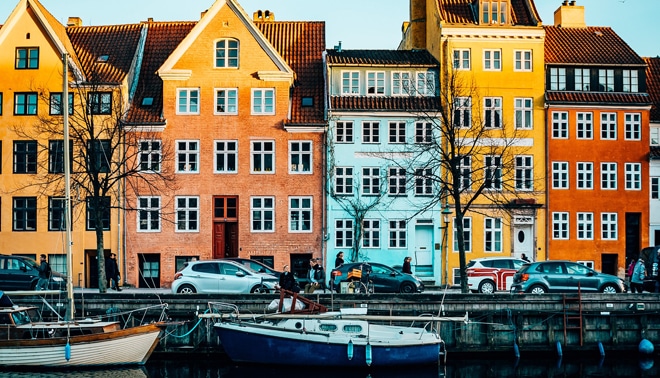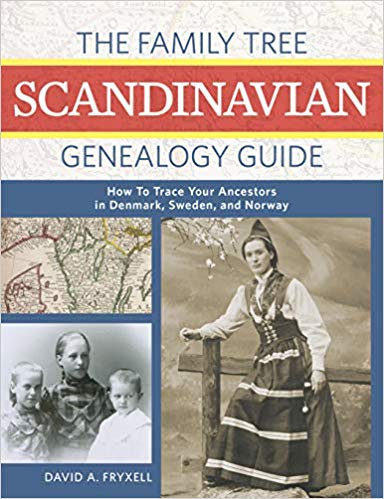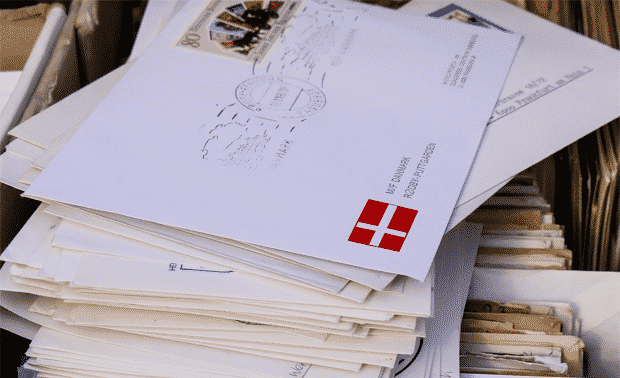
Like so many immigrants, your Danish ancestors were likely lured to America by dreams of a better life and visions of a land flowing with milk and honey. In 1836, the Danish author Hans Christian Andersen described what his countrymen expected to find in America: “Ducks and chickens raining down, geese land on the table.” They were after hygge, a treasured concept that roughly translates to a “cozy feeling of well-being.”
Despite that allure, Danes came to the New World in smaller droves than did their other Scandinavian neighbors, whose economic plights in the homeland were far worse. By 1920, about 300,000 Danes had immigrated to the United States—including at least 20,000 inspired not by promises of poultry, but by the words of Mormon missionaries.
Except for those drawn to Utah, most Danish immigrants settled first in the Midwest. Then, according to the Library of Congress, Danes spread across the country, seemingly vanishing into America’s “melting pot.” Of the Scandinavian groups, the Danes were the quickest to assimilate to their new country—and the quickest to lose sight of their ethnic heritage.
But don’t worry—melting pot or no, genealogical evidence of these immigrants’ lives is far from invisible. If you’re among the nearly 1.5 million Americans who claim Danish ancestry, use the records in this guide to rediscover your Danish heritage.
Comings and goings: immigration records
The Copenhagen police recorded everyone emigrating from Denmark—not just from Copenhagen—between 1868 and 1940. To protect people from unscrupulous emigration agents, the police had oversight of all overseas tickets. Complete information from each emigrant’s ticket grew into 90 thick volumes that included name, last residence, age, year of emigration and initial destination abroad.
Although the Family History Library (FHL) has microfilm of Danish passenger lists from 1869 to 1911, the easiest way to start searching for your emigrant ancestor is online. The police records through 1908—covering 394,000 names—have been compiled in the free Danish Emigrant Archives (DEA). You can search the database by any combination of name, occupation, age, last residence, parish, county, destination (city, state, country), ticket contract number, or date of registration.
Besides these fields, the database also includes birthplace (beginning in 1899) and ship’s name. The database encompasses both migrants traveling straight from Copenhagen to their destination and those who stopped over at another port. On microfilm, these two types of trips are grouped separately as direct and indirect.
If your Danish ancestors lived in Jylland (Jutland) or in the German border county of Schleswig-Holstein (once part of Denmark), they may have emigrated through Hamburg or other European ports rather than Danish ones. The FHL also has microfilmed Hamburg passenger records. For help with these, see the FamilySearch Wiki.
Finding your Danish ancestors’ emigration records (such as in the DEA) often leads you to the name of your ancestor’s parish back in Denmark—information essential to unlocking the most important source of Danish genealogical information: parish records.
Steeples to people: church records
Although the Danes have distinctive immigration and assimilation patterns, tracing your Danish ancestors closely mirrors other Scandinavian research. Like its neighbors, Denmark adopted Lutheranism as its official state religion.
Until almost the 20th century, the church kept all Danish vital records—birth/baptism (Dåb/Fød), marriage (Giftemål) and death/burial (Begravelser). Whatever faith your Danish ancestors professed, Lutheran ministers painstakingly detailed their lives in church records (Kirkebøger). This began nationwide in 1646 after a decree from the king, although the earliest parish records date from 1572.
The free FamilySearch site has led the way in digitizing and indexing Danish church records, with extensive, searchable collections:
The church records collection is linked to original images, so you’re probably better off searching there first.
You can also browse church books at FamilySearch or at the free Danish national archives most of the pages are in Danish, as are those in another free online collection.
Over on Ancestry, subscribers can search collections of baptisms and marriages. MyHeritage has collections of church records, censuses, baptisms, marriages, and burials, which largely mirror the free FamilySearch databases. It’s the best source for confirmation records, however.
If you can’t find your relative in an index, you’ll need to identify his parish to locate him in microfilmed records. Quiz family members and pore over old documents, letters and family Bibles for clues. The locale you uncover may be the name of a village or farm, rather than the parish; use gazetteers and maps to help you match this place to the parish it’s in.
You can find a list of parishes in the FamilySearch Wiki. Keep in mind that Denmark consolidated its original 50 counties into 23 in 1793, and realigned them again in 1970. The counties were replaced by five regions in 2007. The FamilySearch catalog uses the boundaries from 1793 to 1970.
Once you’ve found your ancestors in Danish church records, you’ll unlock a wealth of genealogical information, including:
Baptisms (Dåb)
Children usually were baptized within a few days of birth. Early records may contain only the date, the child’s name and the father’s name, but most registers also list the mother, witnesses, godparents and status of legitimacy. You may even learn the child’s birth date, the family’s place of residence and the father’s occupation.
Marriages (Giftemål)
Look for marriage records in the bride’s home parish. Besides the couple’s names and residences, post-1814 registers frequently include their ages, occupations, fathers’ names, and sometimes their birthplaces.
Burials (Begravelse)
Even if an early ancestor was born before the start of parish records, you can find crucial genealogical information in his burial record. Most burial registers include the deceased’s age and the date and place of death or burial. After 1814, look for the deceased’s residence, cause of death, names of survivors and sometimes the person’s birth date and place, plus parents’ names.
Confirmations (Konfirmation)
Beginning in 1736, Danish youngsters had to master the Lutheran catechism and pass a confirmation test before making first communion at age 14. Early confirmation records list only the child’s name and residence, and sometimes the age. After 1814, you’ll also learn the child’s christening date and place, parents’ names, and date of smallpox vaccination.
For help making sense of the records you find—and deciphering the sometimes-inscrutable old Danish handwriting—consult the FamilySearch Wiki. You can also use online tools to help you translate Danish records.
Government oversight: civil registration and censuses
For Danish research, government vital records (also called civil registration) aren’t really helpful for supplementing church records—unless your ancestor lived in one of the four counties under German rule from 1863 to 1920: Tønder, Haderslev, Åbenrå and Sønderborg. German authorities recorded births, marriages and deaths in these counties beginning in 1874, and the FHL has microfilmed the records.
You also can find civil marriage records for the city of Copenhagen (København) beginning in 1851, plus death certificates for some urban areas covering 1857 to 1932. But parish records should always be your first research stop.
The most helpful government records for your Danish research are censuses. The first enumeration with genealogical information was in 1787, followed by headcounts in 1801, 1834, 1840 and every 5–10 years thereafter until the end of the century. Subsequent censuses were held in 1901, 1911, 1916, 1921, 1925, and 1930.
The information you can glean from Danish censuses varies by year. The 1787 and the next three enumerations list everyone in the household and each person’s age, gender, occupation, marital status and relationship to the head of household. From 1845 on, censuses add religious affiliation and birthplace.
The Danish Demographic Database is making census information searchable and available for free online. Most data through 1930 have been posted, and the subsequent 1940 enumeration is in progress. You can search one or more censuses at a time by name, parish, county, birthplace, age or age range, gender, occupation and position in the household. To view digitized images of the actual census pages, you’ll need to complete a free registration.
The FHL has also microfilmed most Danish censuses, and you can find many of them on FamilySearch.org.
In larger cities from 1870 on, households are arranged alphabetically by street. So once you’ve found a family in one census, start by checking that same locale in both earlier and later enumerations.
Other Danish records
Given this rich mix of readily available records, you’re unlikely to hit many research roadblocks in your Danish genealogy. But if you do—or you simply want to probe deeper into the past—other records may be helpful. Most are among the FHL’s rolls of microfilmed Danish records:
- Citizenship records: Danish citizenship wasn’t a birthright. Rather, cities would confer citizenship upon individuals, who then had the right to reside and do business in that city. Attainment of citizenship was recorded, with data about the individual, in “citizenship books” (Borgerskabprotokoller). The FHL catalogs its collection of these books by county and city under the Court Records heading.
- Court records: If you can read and interpret them, court records contain useful genealogical information, especially regarding inheritance. Most cases were filed initially in city courts called Bytinget.
- Land and property records: Denmark undertook an extensive program of land registration beginning in 1662, and some ownership and sales records date to 1551. An alphabetical register of property-related debtors and creditors was instituted in 1738, and all transactions from 1844 to about 1870 were recorded in registers. These are on FHL microfilm called Regnskaber (account books) and Matrikler (land registration lists).
- Military records: Beginning in 1788, all males up to age 34 were listed by parish on rolls of potential draftees, updated every three years. These Army levying rolls (Lægdsruller) can help you follow a male ancestor from parish to parish. Navy rolls (Søruller), kept separately after 1802, include extensive genealogical data. The Danish National Archives has online levying rolls.
- Probate records: Kept separately from other court records after 1683, probates have been extensively microfilmed by the FHL. FamilySearch has a searchable index of more than 230,000 Danish probate records spanning 1674 to 1851. When using probate records, keep in mind that a brother-in-law, for example, was legally the same as a brother and so may be recorded as such. Guardianship records (Overformynderiprotokoller) can be a useful supplement to probate records when an heir was underage.
- Trade guild records: The FHL has collected some records of guilds from larger Danish cities. Besides tracing a member’s progress from apprentice to journeyman to master craftsman, these records list guild members and may include apprenticeship contracts.
Master these quirks and tricks and, given all the readily available records, you should soon have Danish ancestors “raining down” to grow your family tree.
Discover your Scandinavian ancestors

For more on researching Danish ancestors, check out The Family Tree Scandinavian Genealogy Guide. This comprehensive guide will help you navigate the various kinds of Danish genealogy records. The book also contains crash-course lessons on Danish names, geography and history.
Related Reads
You can also read these other helpful articles on Scandinavian genealogy:
Versions of this article appeared in the March 2009 and October/November 2019 issues of Family Tree Magazine.
FamilyTreeMagazine.com is a participant in the Amazon Associates Program, an affiliate advertising program. It provides a means for this site to earn advertising fees, by advertising and linking to Amazon and affiliated websites.

